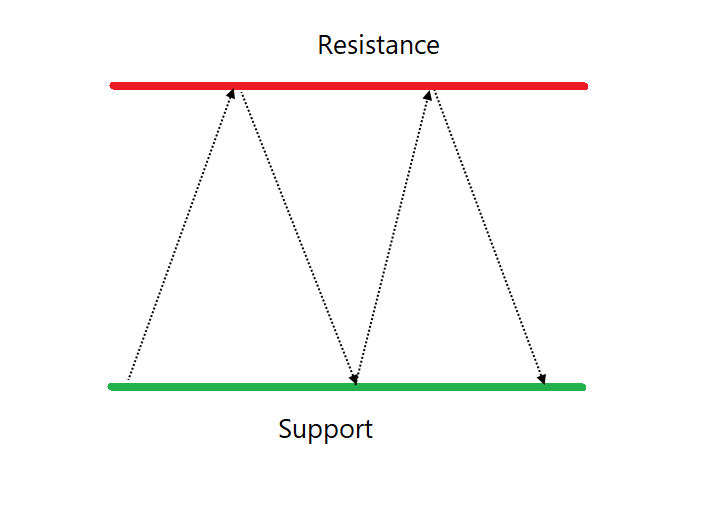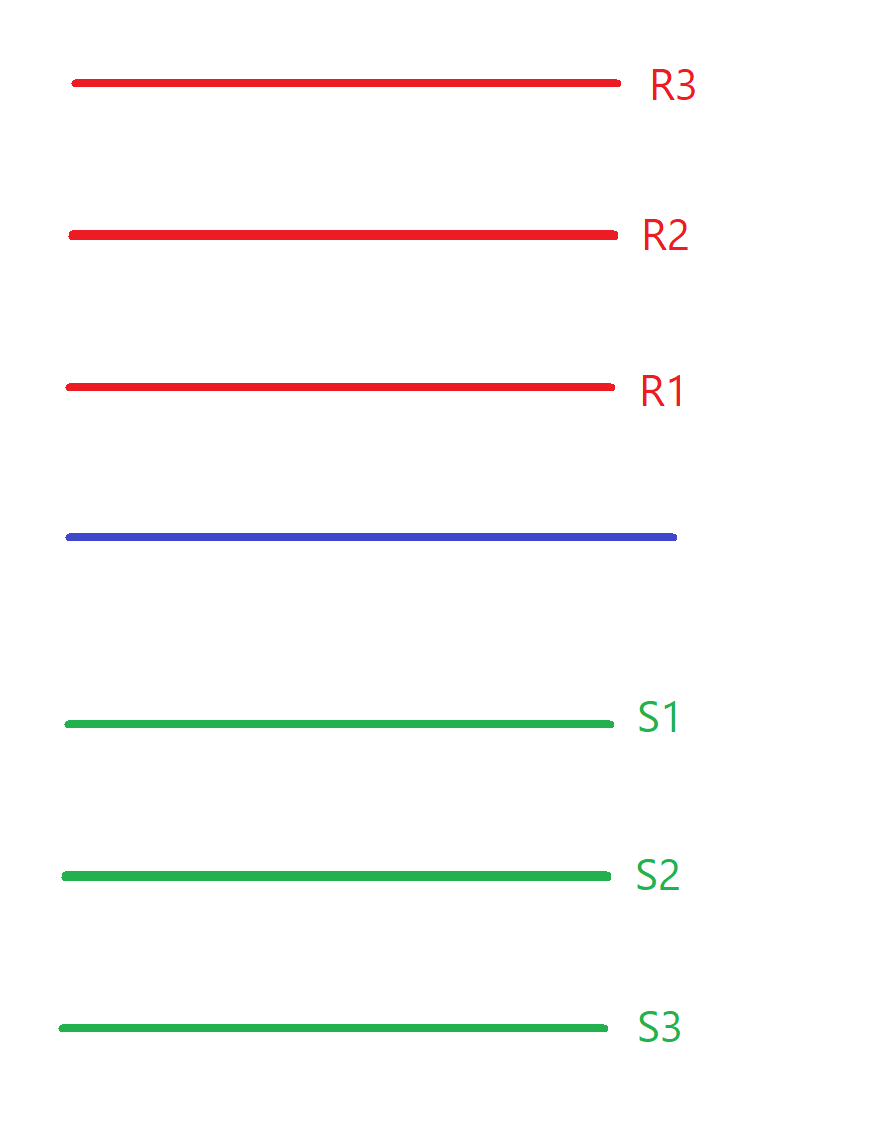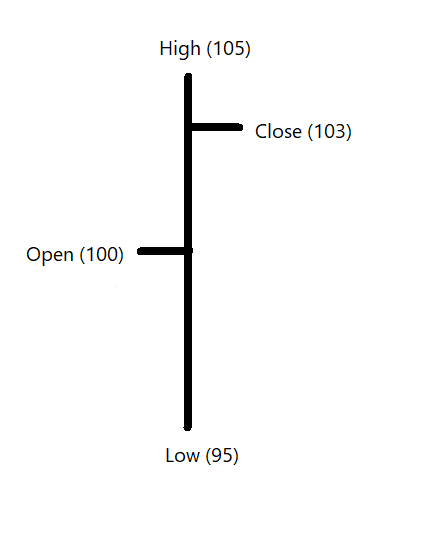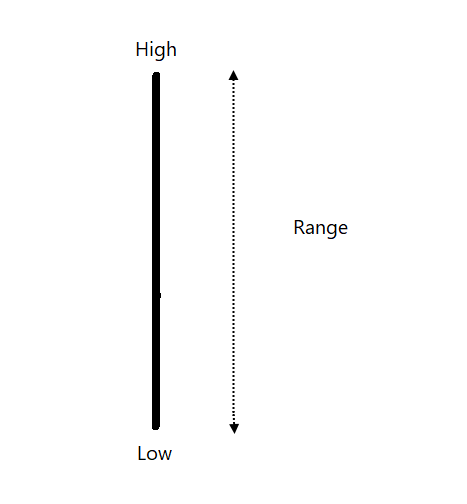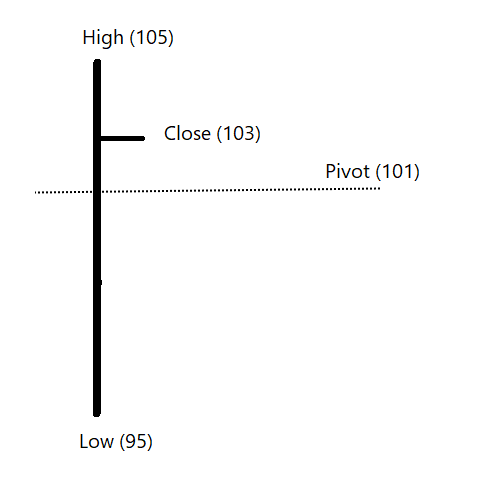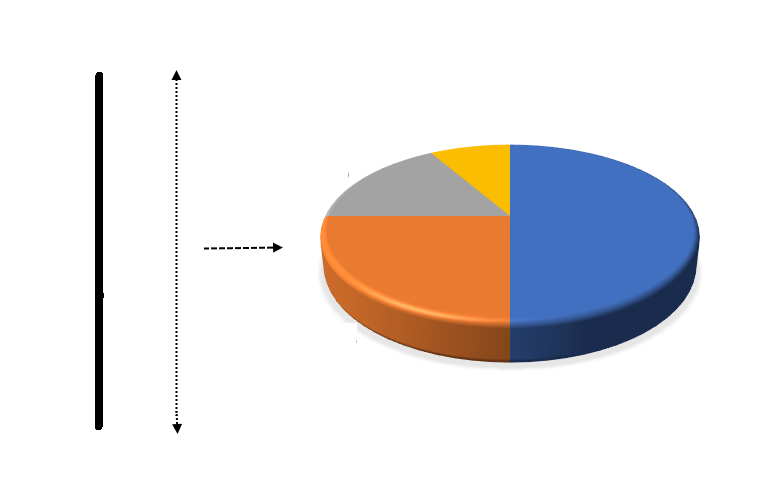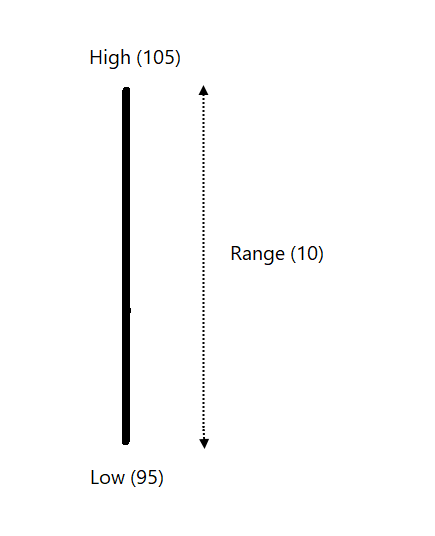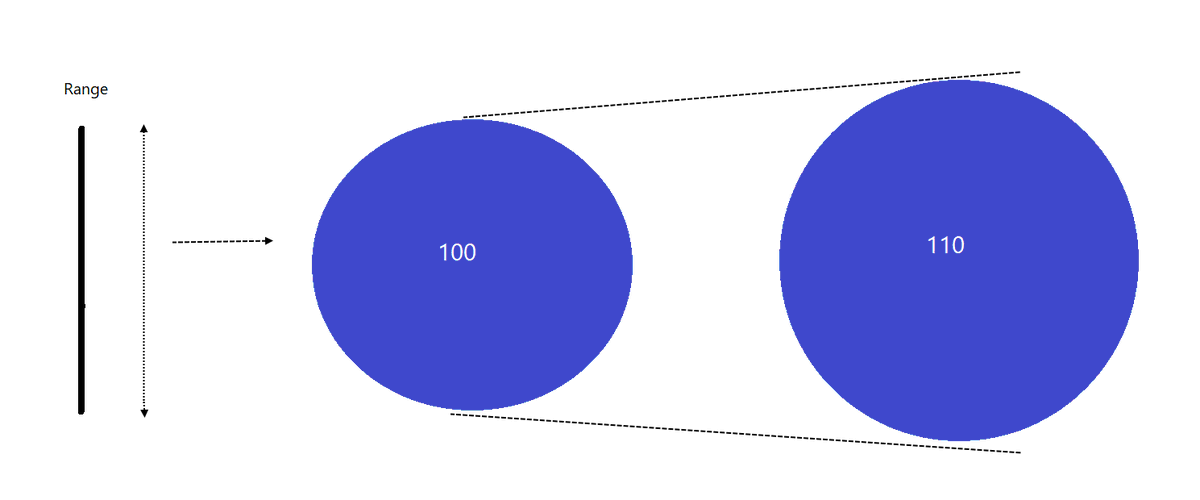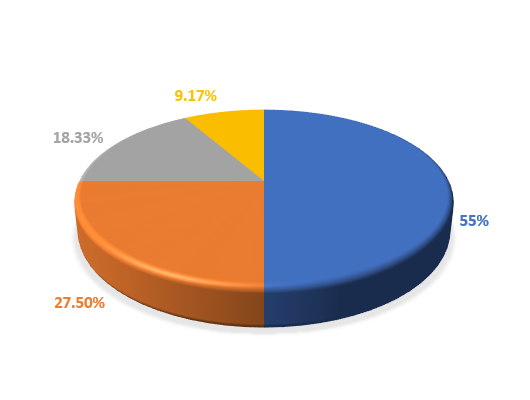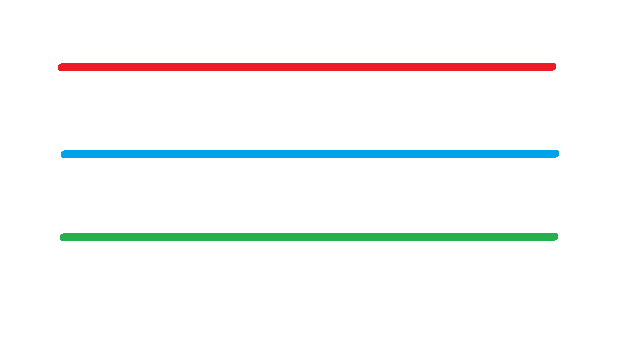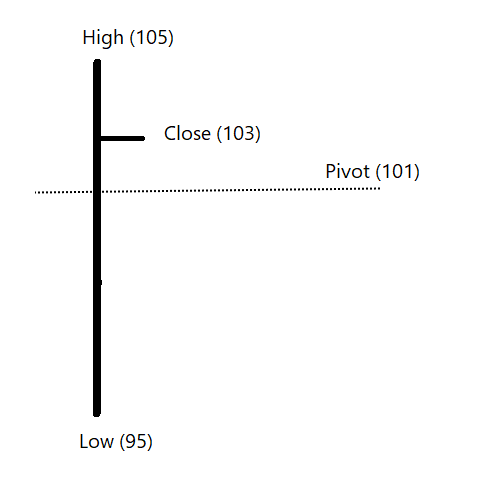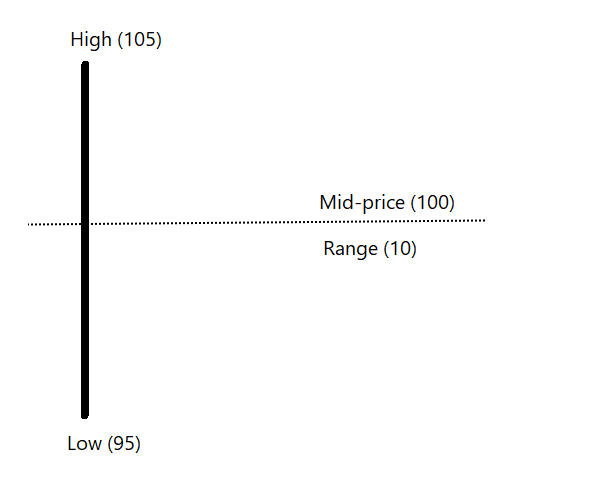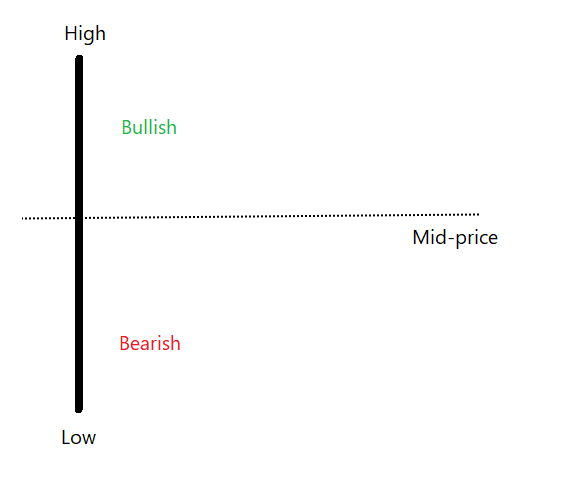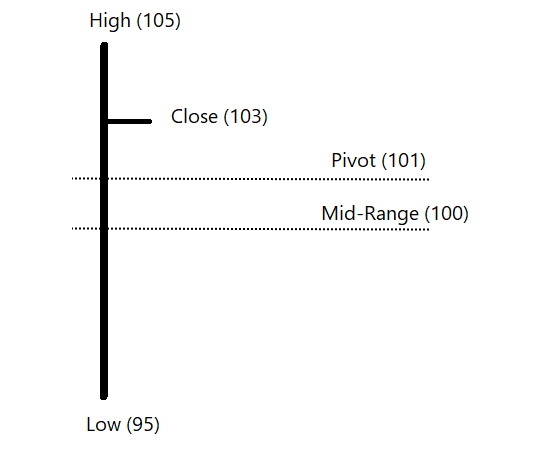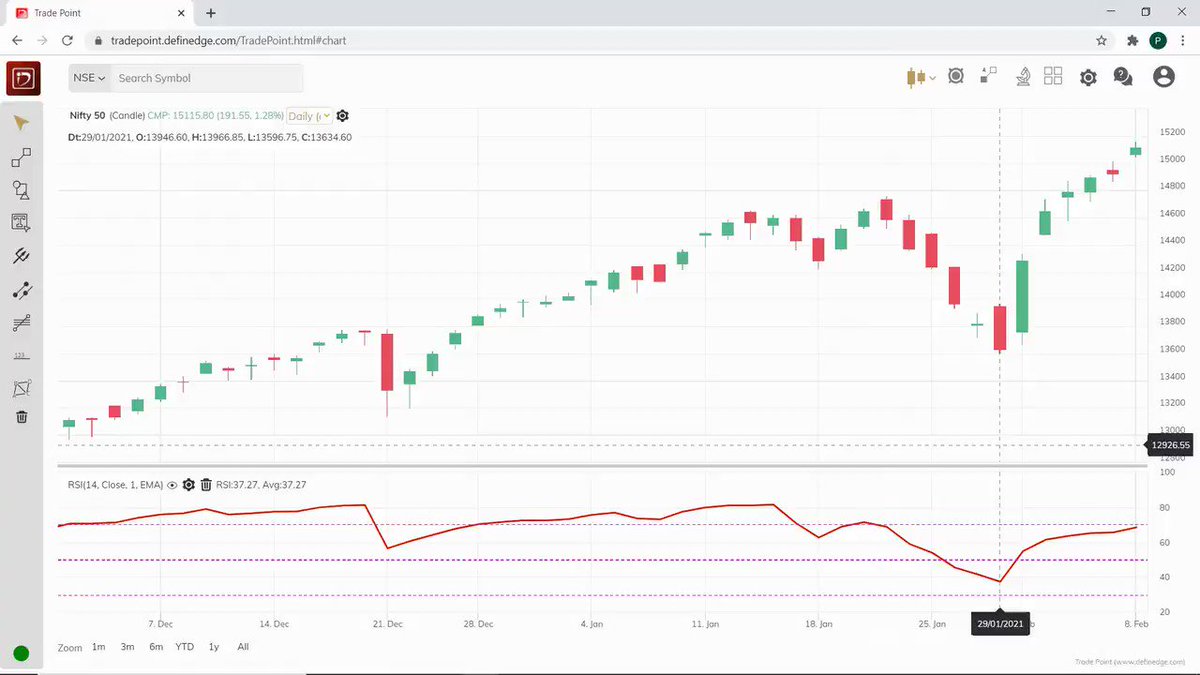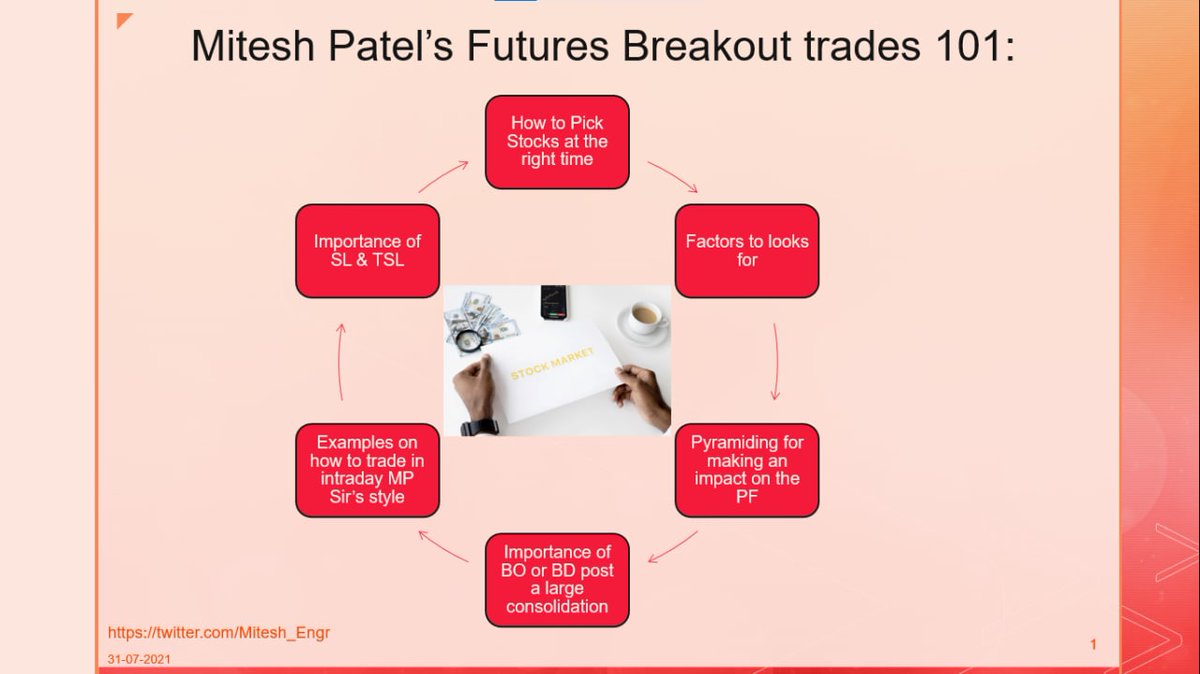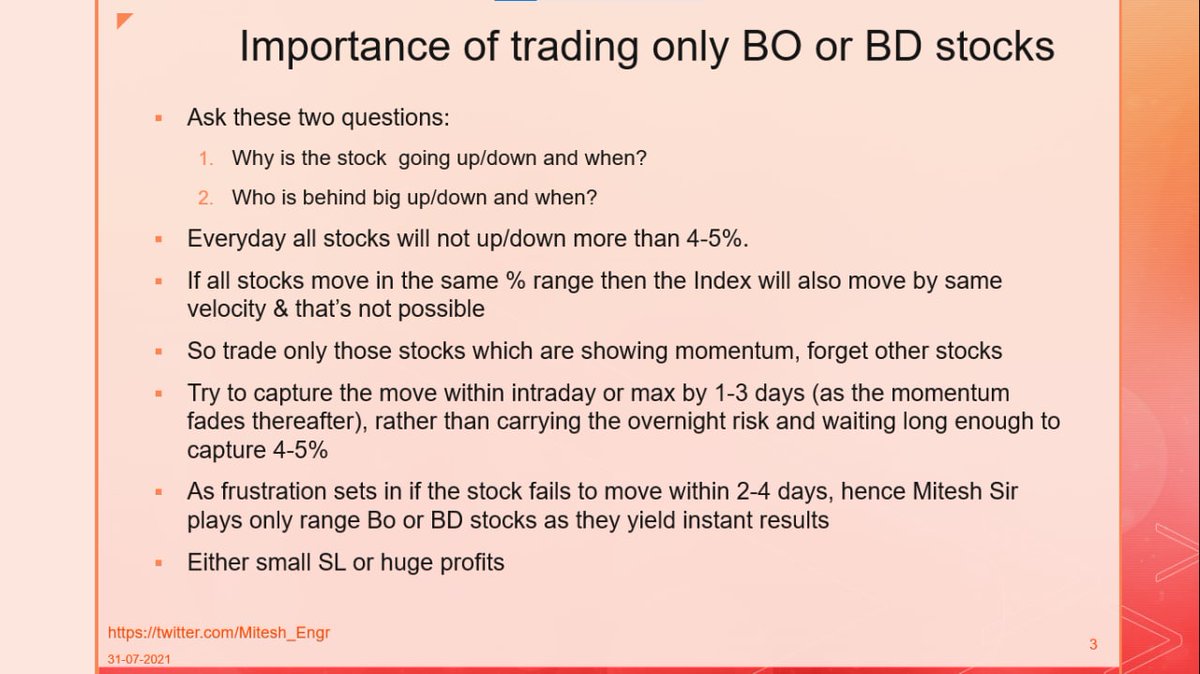Let us think about creating an indicator that shows the trend.
Thread: Parabolic SAR Indicator
Parabolic SAR (PSAR) indicator was developed by J. Welles Wilder.
#PSAR #Indicators #Definedge
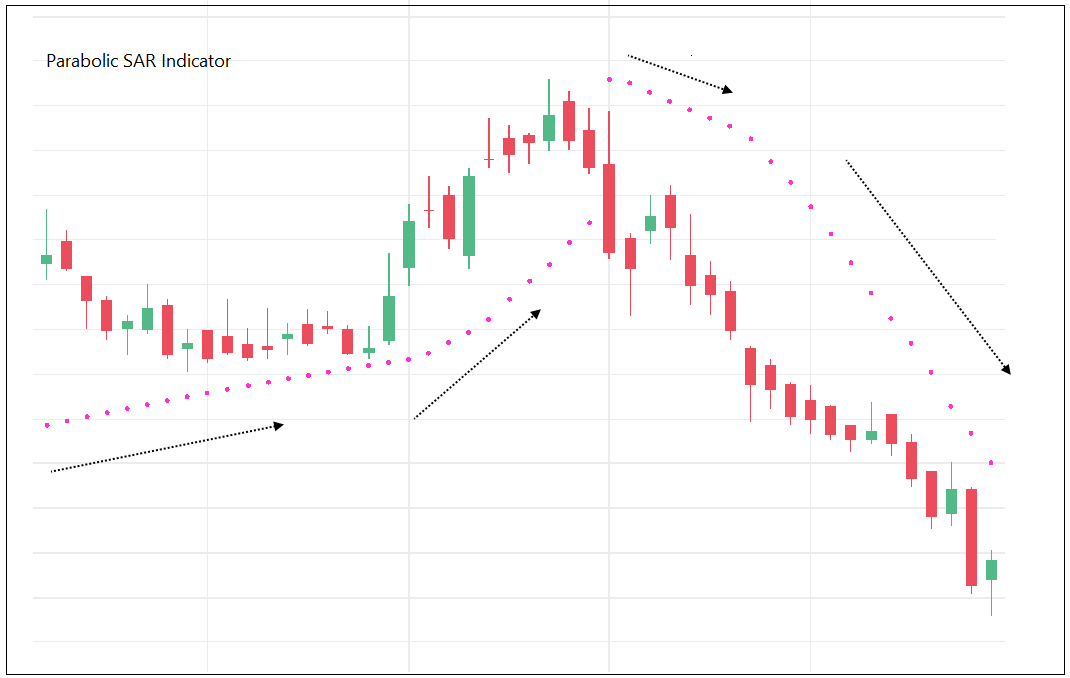
Let us think about creating an indicator that shows the trend.
For trailing the stop in uptrend, indicator needs to be placed below the candle. Similarly, it should be placed above the candle for trailing in a downtrend. We will plot it using ‘dots’.
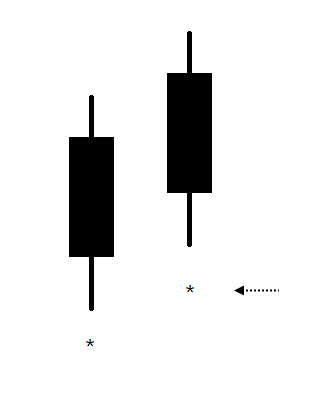
Let us define the trend as:
If Low of the candle > Stop-loss level in bull market = Trend remains bullish.
If High of the candle < Stop-loss level in bear market = Trend is bearish

The indicator rises steadily if the trend is steady. If the trend is strong the indicator should accelerate, it should move faster and stop should get trailed aggressively.
What is strong trend?
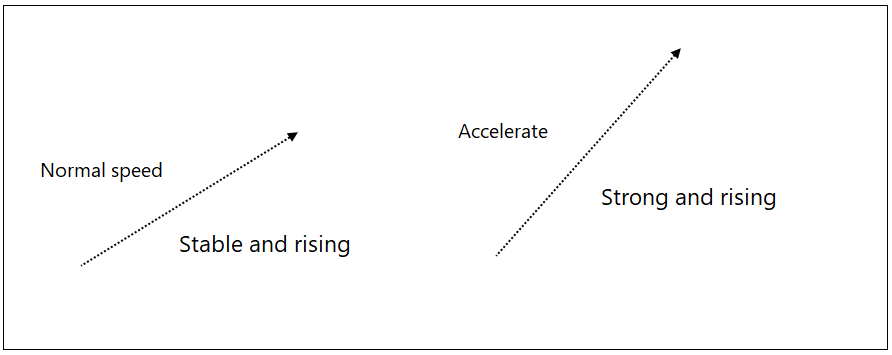
In a bullish trend if price makes a new high it is a strong bullish trend.
In a bearish trend, if price makes a new low it is a strong bearish trend.
Period?
Period for new high: since the indicator turned bullish
Period for new low: since the indicator turned bearish
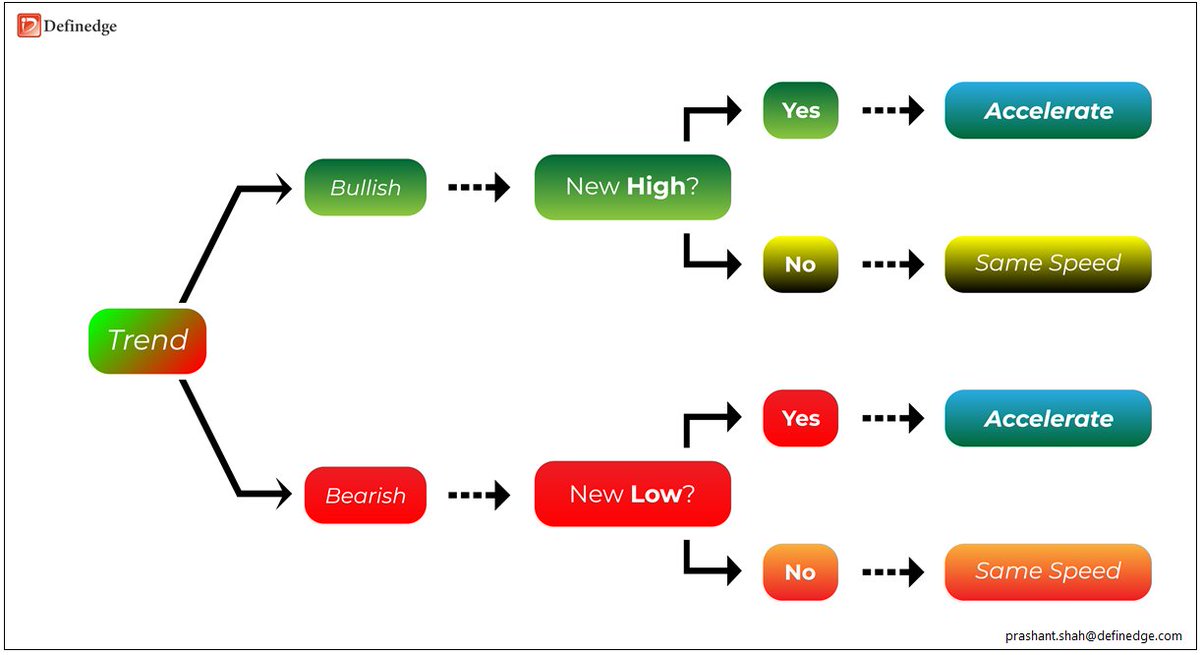
Calculation of PSAR: EP, AF and PSAR
Extreme Price (EP) is calculated on every candle.
‘High’ price in bullish market and ‘Low’ price in bearish market is called as Extreme Price (EP).
If new high is made -> EP = New High price
Else
EP = Prev High
If Bearish trend
If new low is made -> EP = New Low price
Else
EP = Prev Low
Period of new high or low is explained earlier.
> Accelerate it by 0.02 if trend is steady.
> Add 0.02 to previous speed if trend is strong.
> Maximum acceleration will be 0.20.
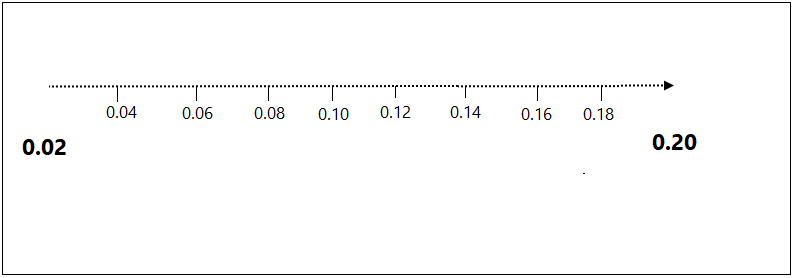
Multiply Acceleration factor by A and add it to the previous stop-loss, you get new PSAR indicator reading.
PSAR = A x AF + Previous PSAR reading
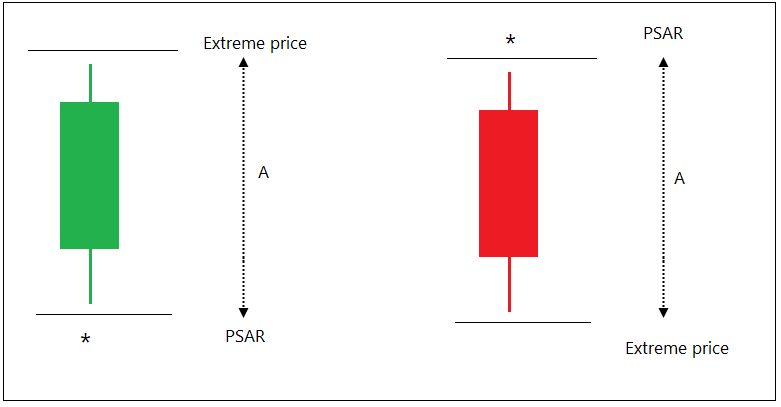
Phase A is when indicator moving at a steady speed. Phase B is when trend is strong (New high in bull market, new low in bear market) hence, PSAR is accelerating with a greater speed (0.02 being added) during B.
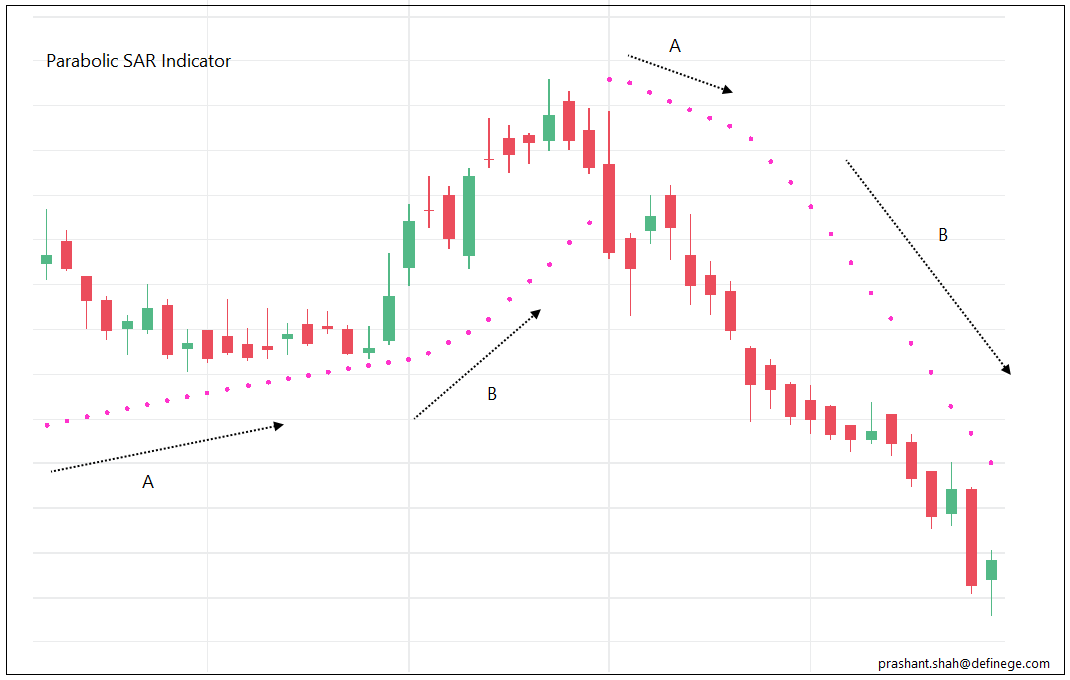
Trend is bullish when price is above the PSAR, it is bearish when price is below PSAR. You can use it as a trend filtration method.
Indicator accelerates during strong trends. Hence, rising PSAR and Falling PSAR are also important.
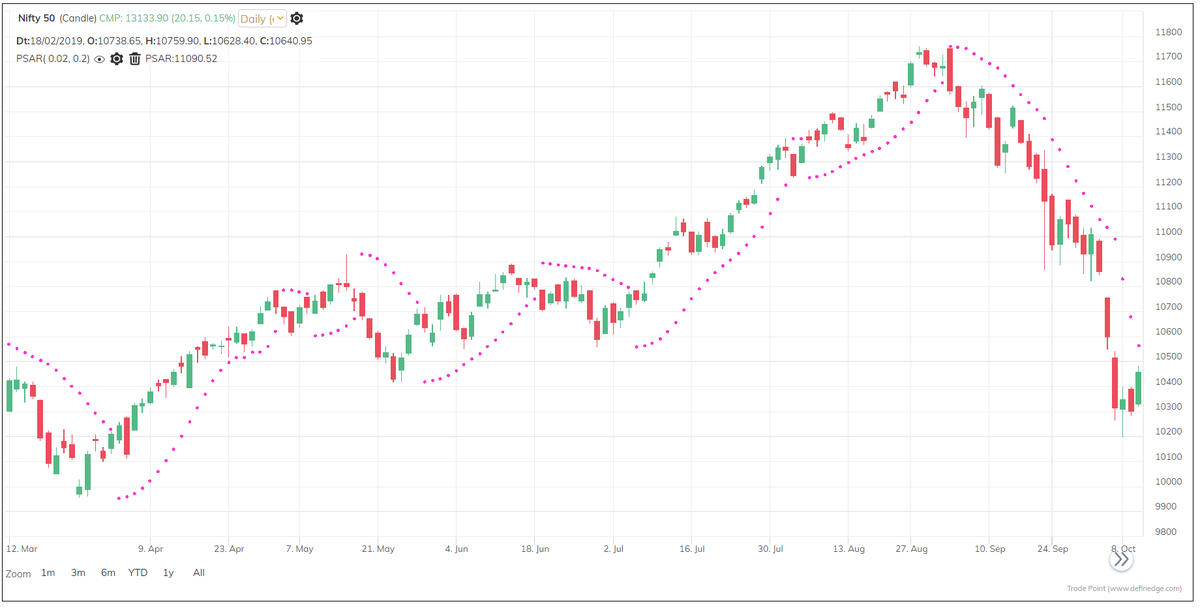
When trend changes, the length of the stop-loss depends on the previous high or low. Avoid the signal if initial stop-loss is not affordable. Wait for the pullback pattern that provides better risk-reward trade
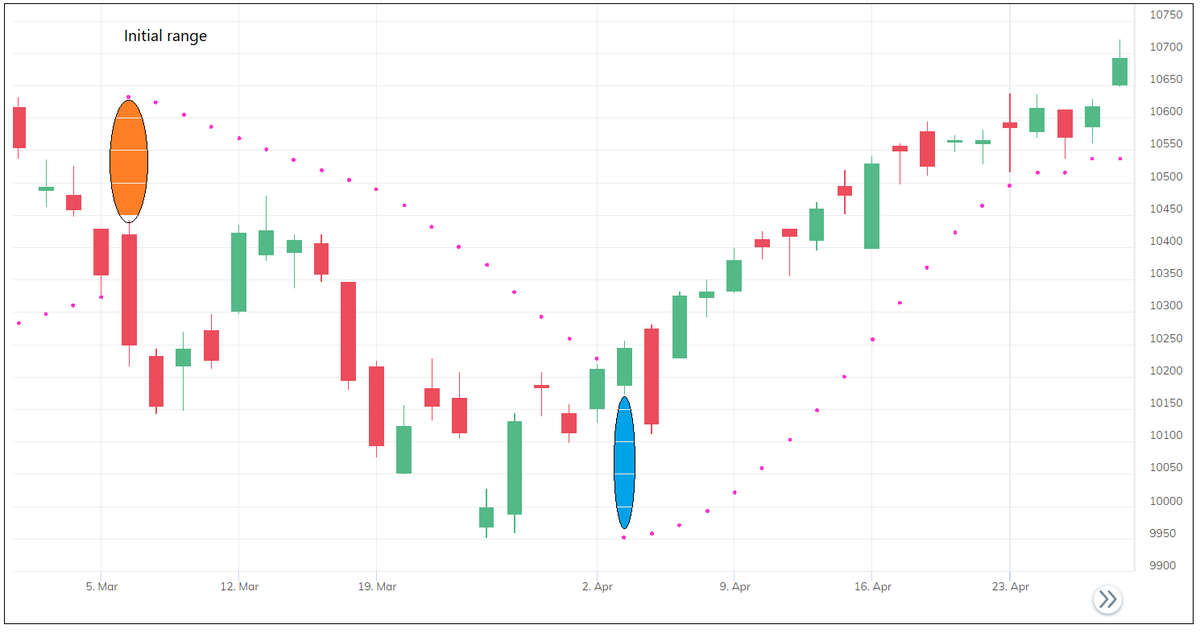
It can be used alone or combined with other studies to design the system.
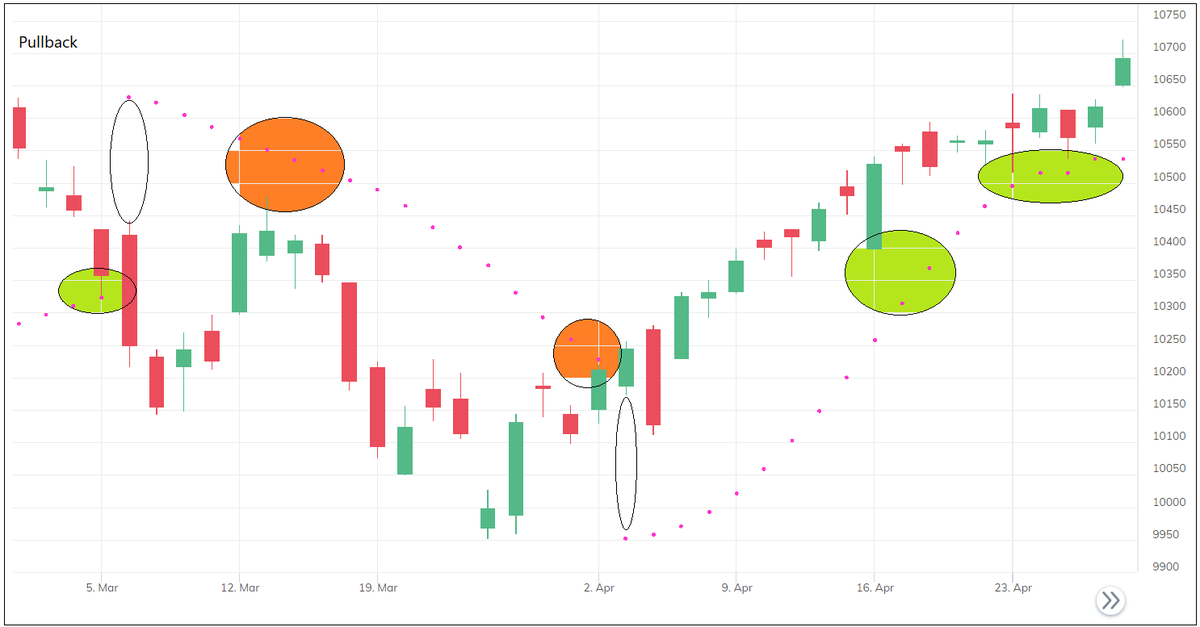
Below are some Important things about PSAR indictor:
• Unlike many other indicators, you do not have to define the look-back period, define the acceleration factor
• It does not use method of averaging
• It uses high, low prices to determine the trend and stop-loss level
• Indicator accelerates if trend is strong
More from Prashant Shah
Thread: P&F Super Pattern
An effective price pattern defined using properties of P&F charts.
#Superpattern #Pointandfigure #Definedge
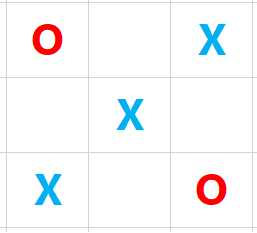
Point & Figure is an oldest charting method where price is plotted vertically, and the chart moves only when price moves. It is a different way of looking at the price, the objective box-value and reversal value offers advantage of identifying objective price patterns.
When price is moving up, it is plotted in a column of 'X'. When it is going down, it is plotted in a column of ‘O’. Normally, three-box reversal criteria is used to define the trend & reversal. Unlike a bar or candle, the P&F column can have multiple sessions in it.
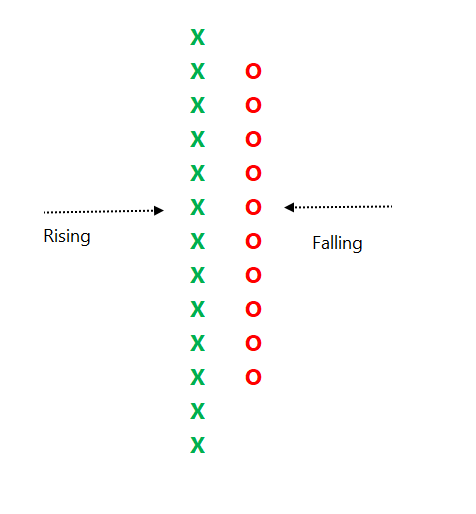
Link to know more about the subject:
https://t.co/2xtLAVPBvm
See below chart. Price is in a strong uptrend, P&F chart would produce a long of column of 'X' with more number of boxes in it.
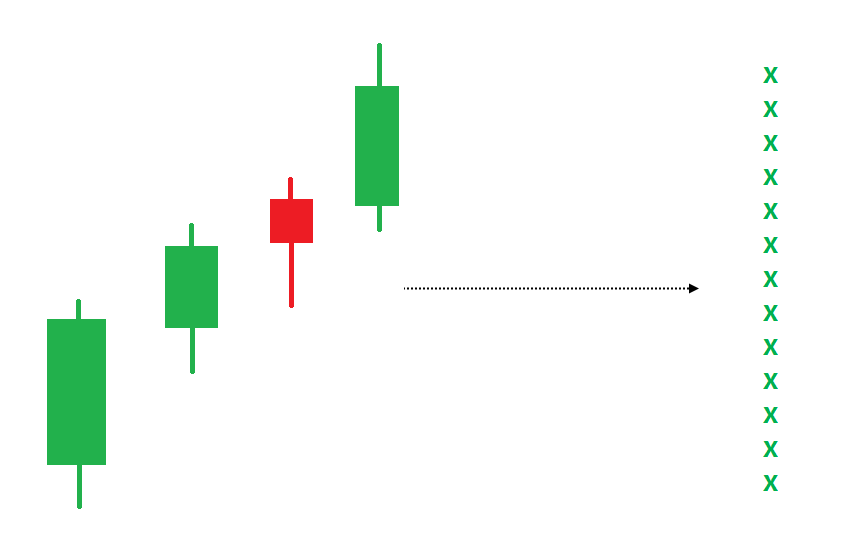
If such a trend is followed by some time bars without meaningful price correct, P&F chart would not move, and it will remain in column of 'X' in such a scenario.
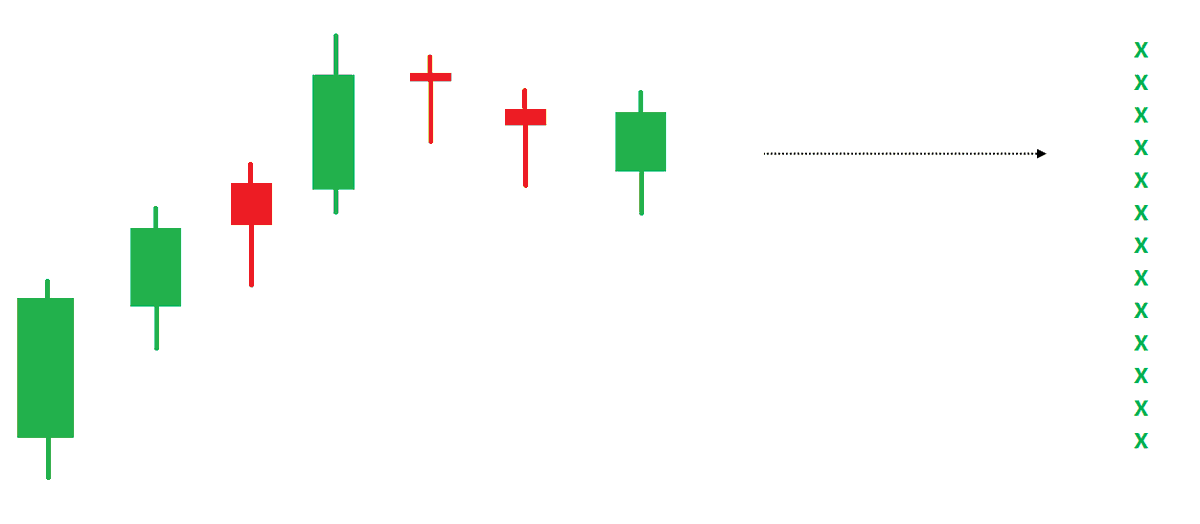
An effective price pattern defined using properties of P&F charts.
#Superpattern #Pointandfigure #Definedge

Point & Figure is an oldest charting method where price is plotted vertically, and the chart moves only when price moves. It is a different way of looking at the price, the objective box-value and reversal value offers advantage of identifying objective price patterns.
When price is moving up, it is plotted in a column of 'X'. When it is going down, it is plotted in a column of ‘O’. Normally, three-box reversal criteria is used to define the trend & reversal. Unlike a bar or candle, the P&F column can have multiple sessions in it.

Link to know more about the subject:
https://t.co/2xtLAVPBvm
See below chart. Price is in a strong uptrend, P&F chart would produce a long of column of 'X' with more number of boxes in it.

If such a trend is followed by some time bars without meaningful price correct, P&F chart would not move, and it will remain in column of 'X' in such a scenario.

More from Trading
Tether Price Manipulation Thread:
Tether has been manipulating #Bitcoin's price upwards for years now by printing unlimited, and unbacked $USDT.
This thread will cover the controversial aspects surrounding Tether, and how it will eventually meet its demise.

1) Tether is a stable coin that was first launched in 2012.
According to the company, Tether is backed 1:1 with the U.S dollar, although this isn't actually the case.
Bitfinex, and Tether have refused to show audits of their reserves, which is held in offshore bank accounts.

2) In 2019, The United States District Court sued Bitfinex, Tether, and Poloniex for being involved in a massive price manipulation, and fraud scheme in the crypto markets.
In a court hearing, Tether's lawyer admitted the stable coin was only backed by 74% cash, and securities.

3) On Jan 15th 2021, iFinex is supposed to submit documents requested by NYAG's investigation.
These documents will be consequential to the case.
https://t.co/82UuLLLXWK

4) How the scam works:
Tether can print infinite amounts of (worthless) $USDT.
They then inject this into BTC, ETH, LTC, (and others) to cause prices to pump.
Notice how during the months they stopped printing Tether, the market moves sideways or drops significantly.

Tether has been manipulating #Bitcoin's price upwards for years now by printing unlimited, and unbacked $USDT.
This thread will cover the controversial aspects surrounding Tether, and how it will eventually meet its demise.

1) Tether is a stable coin that was first launched in 2012.
According to the company, Tether is backed 1:1 with the U.S dollar, although this isn't actually the case.
Bitfinex, and Tether have refused to show audits of their reserves, which is held in offshore bank accounts.

2) In 2019, The United States District Court sued Bitfinex, Tether, and Poloniex for being involved in a massive price manipulation, and fraud scheme in the crypto markets.
In a court hearing, Tether's lawyer admitted the stable coin was only backed by 74% cash, and securities.

3) On Jan 15th 2021, iFinex is supposed to submit documents requested by NYAG's investigation.
These documents will be consequential to the case.
https://t.co/82UuLLLXWK

4) How the scam works:
Tether can print infinite amounts of (worthless) $USDT.
They then inject this into BTC, ETH, LTC, (and others) to cause prices to pump.
Notice how during the months they stopped printing Tether, the market moves sideways or drops significantly.


